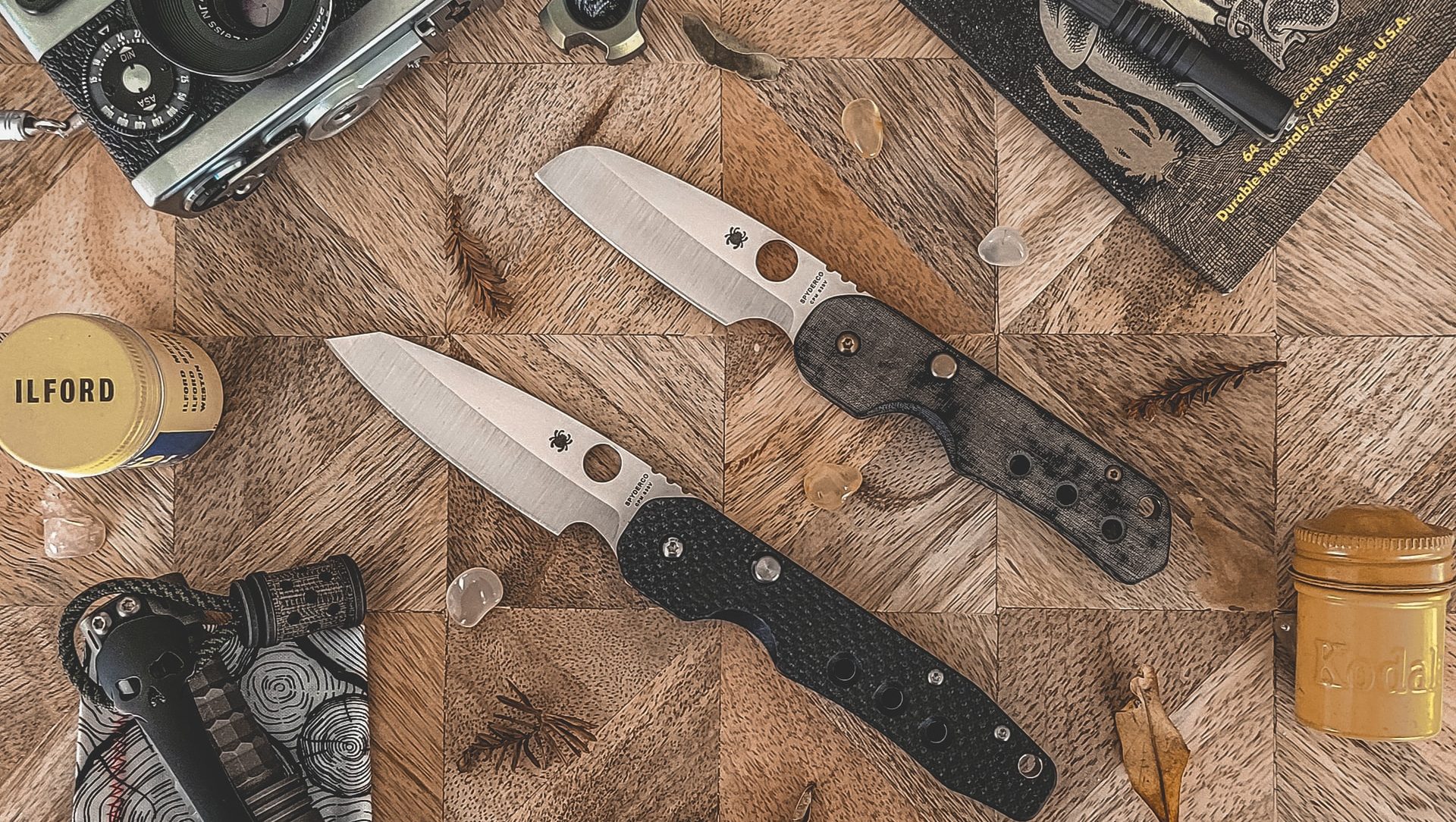If you only want to keep one knife in your kit, Spyderco is your go-to brand. Their blades are versatile, well-made, and durable. It’s doubtful that you’ll need another knife if you pack a Para 2 or Para 3 in your kit.
But which of them should you choose?
The Para 3 is supposedly a smaller version of the Paramilitary 2, but is that the only difference?
Here’s a complete comparison of Para 2 vs. Para 3!
A Brief Review of the Spyderco Paramilitary 2
The ParaMilitary 2 branched out of Spyderco’s Military model, becoming the most popular version of it shortly after. Everything about the knife is convenient, from the rubber blade with excellent traction to the stainless steel blade.
While the Military knife’s blade was four inches, the Para 2 features a 3.42-inch blade. So if your state law prohibits knives with blades larger than four inches, the Para 2 will be an excellent alternative.
The blade is made of CPM S30V stainless steel, which is resistant to corrosion and everyday wear and tear. It also offers excellent retention, so you can resharpen the knife whenever you need without fearing that it’d go blunt.
The Para 2 flat-grind blade can have either a Spyder or a Plain edge, according to your preference. The Spyder is a serrated edge that works for a variety of tasks.
Lastly, the knife has a pressure lock, so you can open and close it quickly using one hand. It’s designed for right-handed users, but there’s a variant available for the left-handed.
A Brief Review of the Spyderco Para 3
The Para 3 is one of the most popular everyday carry, or EDC, knives on the market. Its 3-inch blade has a distinct sheep foot design that cuts into anything without a hitch.
It’s also made of a stainless steel variant called CPM S30V. As a result, it’s both durable and rust-resistant, and it provides exceptional edge retention.
The knife’s handle is made of G10 rubber, a grippy material that feels comfortable under your fingers. You can use it in both dry and wet conditions, and the knife won’t slip, thanks to the excellent traction the rubber offers.
Like all Spyderco knives, the Para 3 has the signature thumb spine and opening blade. There’s also a pocket clip that lets you hang it like a medal.
On top of that, the knife features a compression lock, so you can safely use it with one hand.
Key Differences Between the Para 2 and the Para 3
The major difference between the Para 2 and Para 3 knives is the size. The Para 2 features a 3.42-inch blade, while the Para 3 only has a 3-inch blade.
While the smaller size may mean you can do fewer tasks with it, it’s better for legal reasons. Most state laws dictate that you can’t use a blade larger than three inches for everyday use. The Para 3 solves this problem with its 3-inch blade.
Another difference is the handle. While it’s made of G10 rubber in both knives, the Para 2’s handle is thicker. That means the Para 3 is better for small-handed users because the handle is compact and slim.
The last difference between both knives is the weight. The Para 2 weighs 4.8 ounces, while the Para 3 only weighs 3.04 ounces.
The Para 2 is still lightweight compared to other military knives on the market. However, the lighter weight of the Para 3 gives it leverage.
Some users prefer lighter weight, and it’s understandable since most of them carry tools other than the knife.
Other than these differences, the Para 2 and Para 3 knives are strikingly similar, featuring the same design and significant features.
Similarities Between the Para 2 and the Para 3
Both Para 2 and Para 3 are two sides of the same coin. Their differences aren’t significant, their similarities being more. The biggest proof of that is that they both come from the same ancestor, the Spyderco Military knife.
For example, they both feature the same blade material—CPM S30V stainless steel. They also look relatively alike, with their similar thumb spine and finger choil.
Not only that, but their handles are also made of the same G10 rubber, and they both come with Spyderco’s signature compression lock for single-handed use.
The Drawbacks of Para 2 and Para 3 Knives
Even though both knives are highly popular on the market, there are still some downsides to both. Here’s a brief rundown of the users’ complaints about both Spyderco knives.
Para 2
Users mostly only have good things to say about the Para 2. However, users with small hands sometimes find it hard to use the knife single-handedly. It’s understandable, seeing as the knife has a relatively thick handle.
Some users also find the knife bulky when folding it into their pockets.
Lastly, some buyers mentioned that the blade’s tip looks a bit frail. However, the blade is actually highly durable, and the stainless steel hardly breaks.
Para 3
The Para 3 is smaller and less bulky than the Para 2, so users didn’t complain about its size. Instead, some users mentioned that the stop pin should’ve been adjustable. It doesn’t affect the knife’s functionality, though.
Other than that, some buyers complained that the Para 3 is on the expensive side of the market.
Spyderco offers multiple more affordable options, though, so it’s a matter of preferences.
Spyderco Para 2 Vs Para 3: The Final Verdict
If you want the final verdict, I believe the Para 3 is more ergonomic than the Para 2. It fixes the issues that users complained of in the Para 2, and it’s more comfortable to use. It’s also more compact, so it fits better in pockets.
That doesn’t mean it’s better, though. Both knives are made of the same materials and have the same blade. So, they offer the same functionality with only minor differences.



